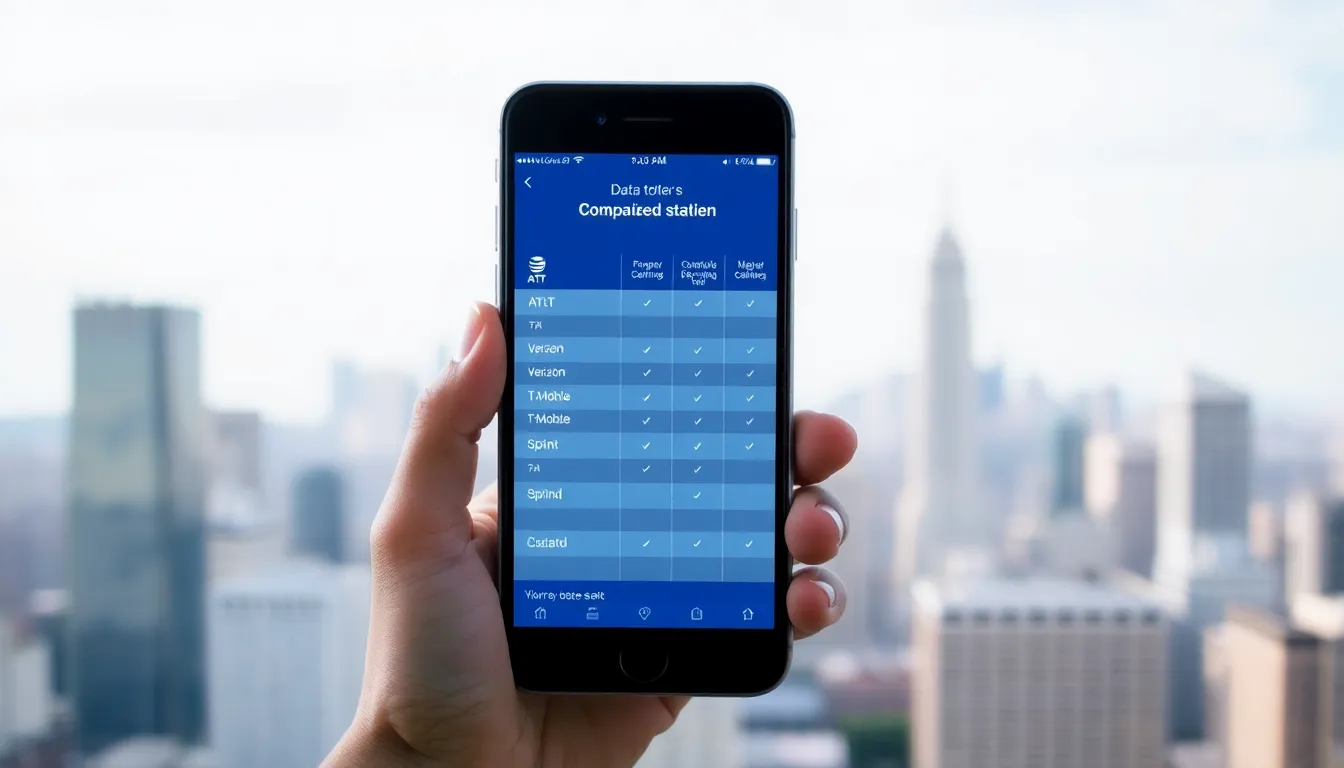In today’s fast-paced digital world, a smartphone without a solid data plan is like a fish out of water—struggling to survive. With everything from social media scrolling to video streaming, having the right data plan can make or break your mobile experience. But with so many options out there, how does one choose without feeling like they’re deciphering hieroglyphics?
Fear not! Navigating the maze of smartphone data plans doesn’t have to be a Herculean task. From unlimited options that sound too good to be true to budget-friendly plans that won’t leave your wallet gasping for air, there’s something for everyone. Let’s dive into the world of data plans and find the perfect match for a seamless smartphone experience that keeps you connected without breaking the bank.
Table of Contents
ToggleOverview of Smartphone Data Plans
Smartphone data plans provide essential connectivity in today’s digital landscape. Understanding available options helps users make informed choices.
Types of Data Plans
Pay-per-use plans charge users based on the data consumed, offering flexibility for occasional users. Prepaid plans deliver a set data amount each month without contracts, making budgeting easier. Postpaid plans involve monthly contracts with predetermined data allowances, often suitable for heavy users. Unlimited plans provide unrestricted data access, ideal for users who stream content frequently. Shared plans allow multiple devices under one account, bringing cost savings for families or groups.
Choosing the Right Plan for Your Needs
Assessing data usage patterns starts the process of selecting the right plan. Streaming videos or music consumes more data, while basic browsing requires less. Considering user behavior helps identify whether a limited or unlimited plan is appropriate. Researching carrier offerings provides insights into coverage and pricing. Evaluating additional features, such as mobile hotspot capabilities, enables users to maximize their plans. Comparing different providers guarantees the best option aligns with personal or family needs.
Major Carriers and Their Offerings

Several major carriers provide diverse smartphone data plans tailored to different needs. Understanding their offerings aids in making an informed decision.
Comparison of Data Plans
AT&T, Verizon, T-Mobile, and Sprint offer various data plans, each with unique features. AT&T provides both unlimited and tiered options, accommodating casual and heavy users. Verizon promotes high-speed data with multiple unlimited plans that prioritize video streaming quality. T-Mobile focuses on value, featuring competitive unlimited plans and no overage fees. Sprint, while recently merging with T-Mobile, provides budget-friendly options that include basic and unlimited plans. Users can compare monthly data limits, contract commitments, and additional perks such as international roaming.
Price and Coverage Analysis
Pricing structures vary significantly among carriers, influencing user choice. AT&T’s plans typically range from $30 to $85 per month, depending on data allocation. Verizon’s unlimited plans start at $80, reflecting its extensive network coverage. T-Mobile offers flexible plans starting around $70, including features like Netflix subscriptions. Sprint’s prices remain lower, with plans averaging $60 monthly. Coverage also plays a crucial role; Verizon leads in nationwide coverage, while T-Mobile excels in urban areas. AT&T balances coverage and price effectively, making it a strong contender for diverse user needs.
Benefits of Smartphone Data Plans
Smartphone data plans enhance user experience through reliable connectivity and convenience. These plans not only keep individuals connected but also simplify access to essential online services and apps.
Convenience and Connectivity
Smartphone data plans offer seamless connectivity, enabling users to access the internet anytime, anywhere. With reliable data, individuals can effortlessly browse social media, stream videos, and conduct video calls. Planholders no longer need to seek Wi-Fi hotspots, freeing them to enjoy connectivity on the go. Data plans facilitate instant communication through messaging apps and emails, ensuring users stay connected with friends, family, and colleagues. Additionally, many data plans include mobile hotspot features, allowing users to share their connection with other devices, further enhancing convenience.
Cost-Effectiveness for Users
Smartphone data plans provide cost-effective solutions for various usage needs. Unlimited plans suit heavy users who consistently stream and download content, while pay-per-use options benefit light users to avoid overspending. Prepaid plans cater to budget-conscious individuals, preventing unexpected charges. Comparing costs among different carriers reveals significant savings for similar features. For example, AT&T’s plans range from $30 to $85, while T-Mobile’s average around $70, presenting distinct options for every budget. Selecting the right plan can lead to substantial savings, ensuring users enjoy mobile connectivity without financial strain.
Common Pitfalls to Avoid
Selecting a smartphone data plan involves navigating various challenges. Recognizing common pitfalls can enhance decision-making and ensure optimal connectivity.
Hidden Fees and Charges
Many users overlook hidden fees associated with smartphone data plans. Activation fees may appear on the first bill, impacting initial costs. Upgrade fees often catch users off guard when switching plans. Additionally, some providers impose data overage charges once limits are exceeded, leading to unexpected bills. To avoid surprises, thoroughly read the fine print before committing to a plan. Comparing multiple carriers helps in identifying potential hidden charges that can inflate monthly expenses. Searching for transparent pricing structures can also simplify the decision-making process, ensuring users remain informed.
Data Limits and Throttling
Data limits frequently cause frustration among smartphone users. Carriers often impose caps on how much data is available each month. Exceeding these limits may result in throttling, which significantly reduces internet speeds until the next billing cycle begins. This slowdown affects streaming, browsing, and other online activities. It’s crucial to evaluate individual data usage to select the best plan without overage concerns. Users can benefit from considering unlimited options if their data needs remain high. Understanding throttling policies helps prevent disappointment and ensures a smoother mobile experience.
Choosing the right smartphone data plan is crucial for an optimal mobile experience. With a variety of options available it’s important to assess personal usage patterns and budget constraints. By understanding individual needs and comparing different carriers users can find a plan that offers both value and reliability.
Avoiding common pitfalls like hidden fees and overage charges ensures a smoother experience without unexpected costs. Whether opting for an unlimited plan or a more budget-friendly option the right data plan can enhance connectivity and convenience in today’s digital world. Prioritizing research and careful evaluation will lead to informed decisions that keep users connected without financial strain.



